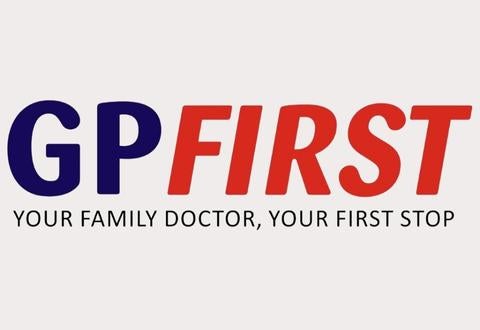What is - Common Skin Growths and Tumours
- Skin tags are common, benign flesh-coloured to brown skin growths.
- There is an increased risk in overweight individuals, pregnant women and those with other family members who have skin tags.
- They are commonly found in skin folds such as the neck, armpits, and groin, although they can occur just about anywhere on the body.
- Occasionally, they may twist and strangulate their blood supply, resulting in pain. Trauma and irritation can occur from rubbing against clothing or jewelry.
- Skin tags may be left alone. However,they can be removed with simple snip/ shave excision, lasers or electrocautery.
Seborrhoeic Keratosis
- Seborrhoeic keratoses present as scaly, brown, somewhat greasy skin growths that vary in size and thickness.
- It often appears to be “stuck” onto the skin surface. They can occur on any skin surface but are commonest on the face, neck, trunk and upper limbs.
- Seborrheic keratoses can increase in numbers with age and with prolonged sun exposure.
- Treatment is usually not necessary unless they become itchy, irritated or of cosmetic concern. Treatment options include cryotherapy (liquid nitrogen), scrapping of the skin (curettage or cautery) or laser therapy.
- Sometimes a darkly pigmented seborrheic keratosis may look like a cancerous mole. In these cases, a small skin biopsy may need to be taken for microscopic examination. The risk of recurrence is high.
Cherry Angioma
- Cherry angiomas are small, benign growths made up of blood vessels. They occur in adults and can increase in number with age.
- They present as small red lumps and can appear anywhere on the body but are more common on the trunk and limbs. They can bleed if traumatised.
- Treatment is not required unless they become itchy, bleed recurrently or cause cosmetic concern.
- Treatment options include cryotherapy (liquid nitrogen), electrosurgery or laser ablation.
Sebaceous Hyperplasia
- Sebaceous hyperplasia are benign skin growths made up of enlarged oil (sebaceous) glands. They occur in adults and are more common in males.
- They present as small, flesh-coloured to yellow bumps, most commonly found on the face.
- Sometimes, they can mimic skin cancer and a small skin biopsy may be needed for microscopic examination to confirm the diagnosis.
- Treatment is purely for cosmetic reason, and include cryotherapy (liquid nitrogen), electrosurgery or laser ablation.
Epidermal (Epidermoid) Cyst
- Epidermal cysts are common skin lumps that are usually found on the face, scalp or upper trunk of adults.
- They present as flesh-coloured, firm lumps with a central opening (punctum). They can sometimes become infected.
- They can be surgically removed if required.
Neurofibroma
- Neurofibromas are benign overgrowths of the nerve tissues in the skin that commonly occur in adults.
- They usually present as single, soft, flesh-coloured bumps on the skin and are usually asymptomatic. They can present on any skin surface but are common on the trunk and limbs.
- Neurofibromas can be left alone. If treatment is required, a shave or excision biopsy can be performed.
Dermatofibroma
- Dermatofibromas are benign skin growths that represent overgrowth of fibrous tissue.
- They present as firm lumps with a dusky red to brown colour and are most commonly found on the limbs. It is more common in women and it can occasionally be painful on pressure but are usually asymptomatic.
- Treatment is only required if it is causing symptoms. Treatment options include surgical removal or injection of corticosteroid.
Lipoma
- Lipomas are fairly common benign tumours that represent overgrowth of fatty tissue in the skin.
- They present as solitary, soft, mobile bumps that grow very slowly, with eventual stabilisation and little tendency to regress. They can vary in size from very small to rather large.
- They are usually asymptomatic but may become painful.
- Treatment is usually not necessary, but it can be removed by surgical excision or liposuction.
- Moles are extremely common benign pigmented skin growths that can be found on all children and adults.
- Moles can increase in number in childhood and teenage years, especially with increased sun exposure.
- Moles appear initially as flat or slightly raised, light to dark brown lesions. With time, they can become thicker.
- There is a very small risk of cancerous change (malignant melanoma) in all moles with increased sun exposure, especially in caucasians.
- Moles that show suspicious features can be surgically removed for further microscopic examination
Suspicious features that needs to be observed include:
- A: Asymmetry
- B: Borders (irregular, blurred)
- C: Colour (blue, black, red and white)
- D: Diameter (rapid increase in size)
- E: Evolution (change over time)
Sun protection is important. Measures include:
- Avoidance of direct sun between 10am to 4pm
- Use of sunscreens with at least SPF 30 and protection against UVA and UVB
- Use of hats, shades and umbrellas when under direct sunlight
Contributed by
The information provided is not intended as medical advice. Terms of use. Information provided by SingHealth.
Condition Treated At
Department
Dermatology
Department
Department of Surgery
Department
Department of Dermatology
Department
Department of Dermatology
Our Medical Specialists
1
2
3
4
5
Health Articles


















